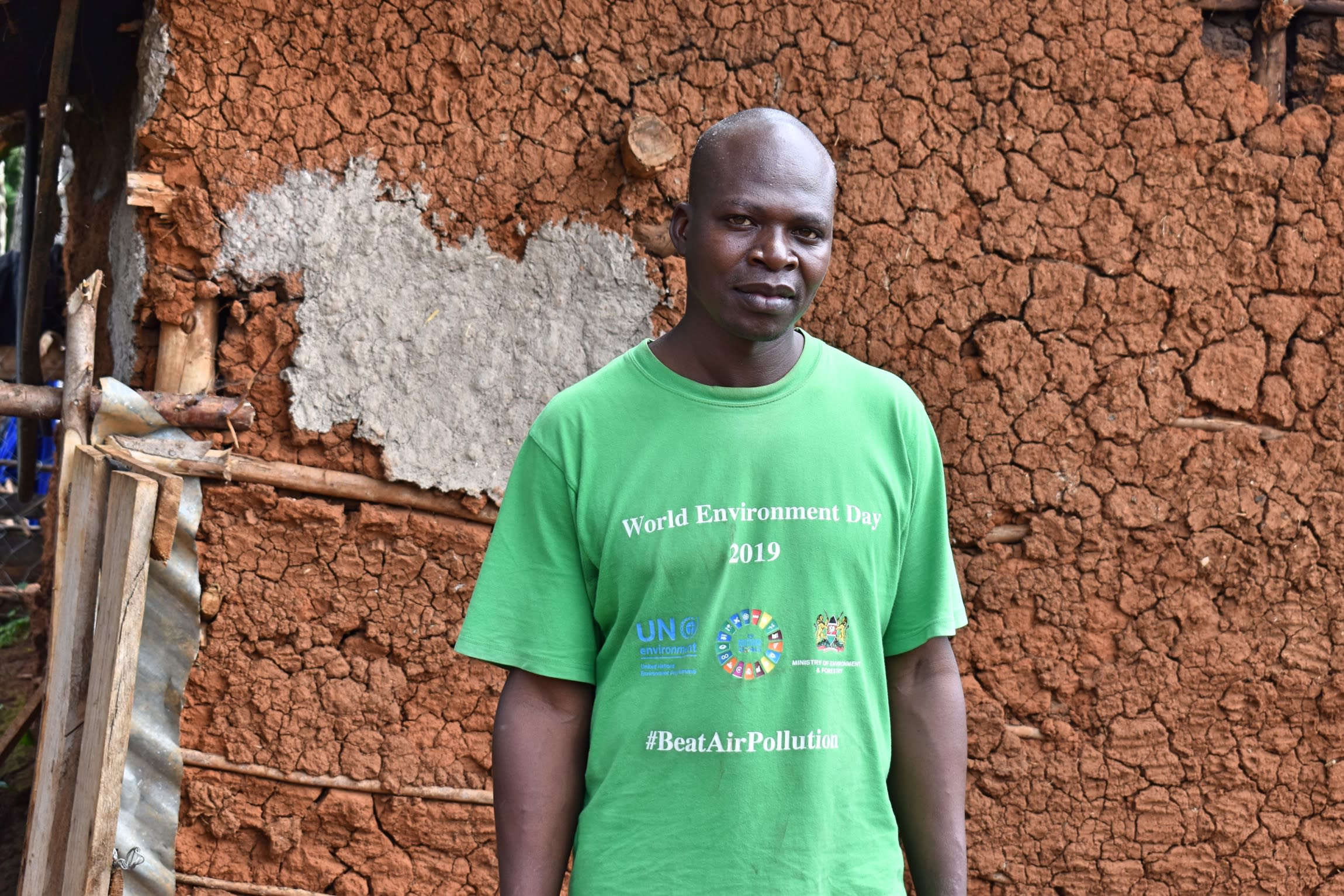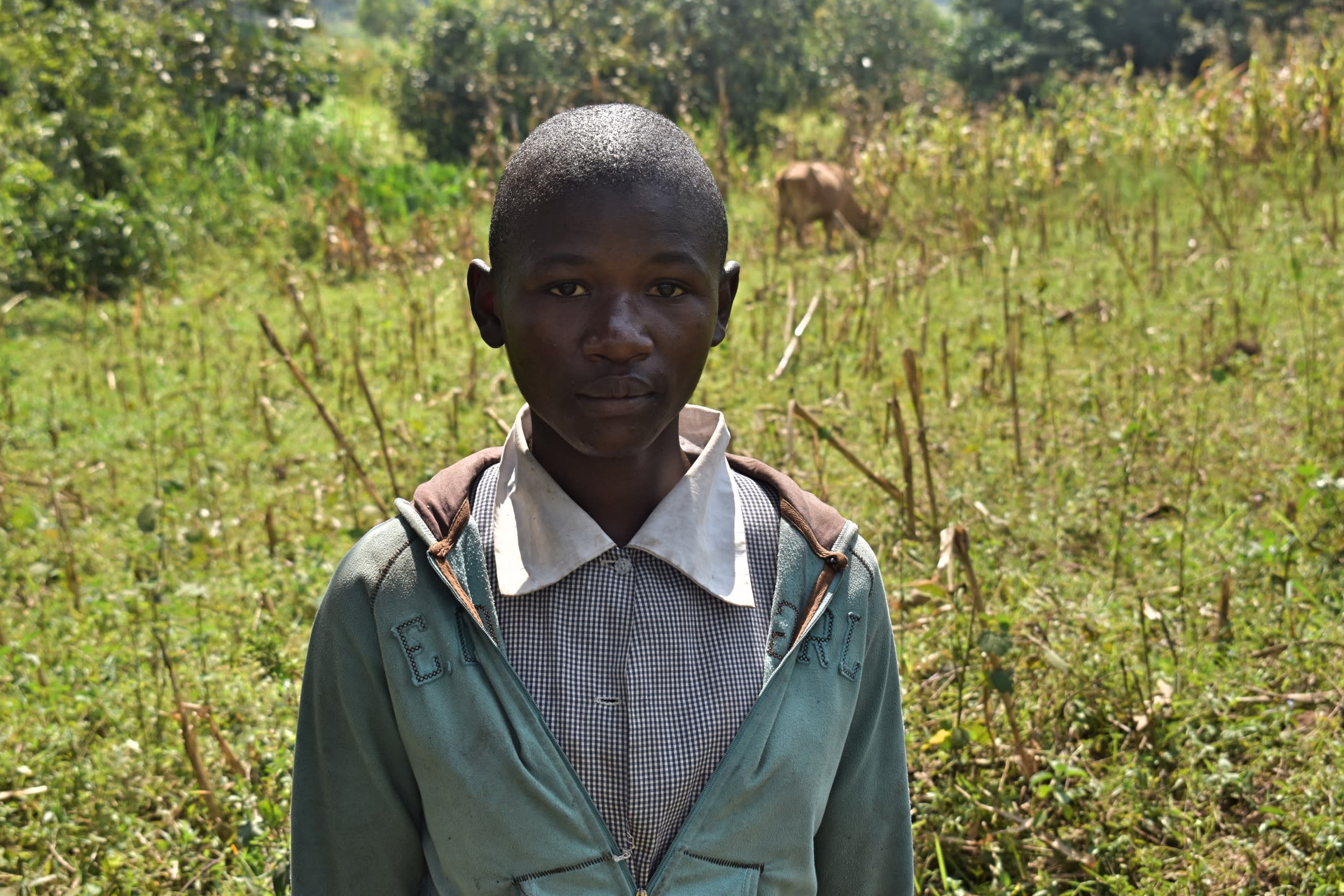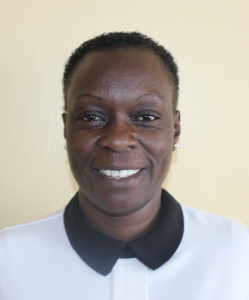Although the water of Abel Masai Spring never stops flowing, the water also delivers Musingu's 210 community members a constant stream of water-related illnesses, leaving a trail of bereaved parents and orphans in its wake.
The most commonly reported illness in Musingu is typhoid, which can be deadly if left untreated. But treating typhoid also comes at a great cost for families already struggling financially.

"My wife has really used a lot of money on medication to treat typhoid," said 40-year-old farmer, Simon Masai (in the photo above). "As a family, we can't afford that money."
But with an unprotected spring as their only water source, it's easy to see why so many people in Musingu get sick. The water source is open to all forms of contamination: human, animal, and environmental. Whenever it rains, the water turns brown and opaque from stirred-up sediment and fertilizer from nearby farms that wash into the stream.
The way some of the younger community members treat (or don't treat) the water may be causing some illnesses as well.
"You find that when children come from school to fetch water, they immerse their containers into the water, yet some of them are not clean," said 17-year-old Pauline M., in the photo below. "After [drinking the] water, they start to complain about [their] stomachs."

“Children require more water (by weight) than adults, so their exposure to water-borne pathogens is much higher. Diarrhoeal diseases cause dehydration in children much faster than in adults. Children are more likely to develop severe infections and experience complications during recovery due to their small body size and their developing immune systems, which provide little natural immunity or resistance.” - UNICEF
With an improved water source and some hygiene and sanitation training, the people of Musingu should see drastic improvements in their health. All that money that has gone into treating water-related illnesses could be channeled into more productive things. And hopefully, there will be fewer grieving parents and orphans in Musingu in the future.
What We Can Do:
Spring Protection
Protecting the spring will help provide access to cleaner and safer water and reduce the time people have to spend to fetch it. Construction will keep surface runoff and other contaminants out of the water. With the community’s high involvement in the process, there should be a good sense of responsibility and ownership for the new clean water source.
Fetching water is a task predominantly carried out by women and young girls. Protecting the spring and offering training and support will, therefore, help empower the female members of the community by freeing up more of their time and energy to engage and invest in income-generating activities and their education.
Training on Health, Hygiene and More
To hold trainings during the pandemic, we work closely with both community leaders and the local government to approve small groups to attend training. We ask community leaders to invite a select yet representative group of people to attend training who will then act as ambassadors to the rest of the community to share what they learn. We also communicate our expectations of physical distancing and wearing masks for all who choose to attend.
The training will focus on improved hygiene, health, and sanitation habits in this community. With the community’s input, we will identify key leverage points where they can alter their practices at the personal, household, and community levels to affect change. This training will help to ensure participants have the knowledge they need about healthy practices and their importance to make the most of their water point as soon as water is flowing.
Our team of facilitators will use a variety of methods to train community members. Some of these methods include participatory hygiene and sanitation transformation, asset-based community development, group discussions, handouts, and demonstrations at the spring.
One of the most important issues we plan to cover is the handling, storage, and treatment of water. Having a clean water source will be extremely helpful, but it is useless if water gets contaminated by the time it is consumed. We and the community strongly believe that all of these components will work together to improve living standards here, which will help to unlock the potential for these community members to live better, healthier lives.
We will then conduct a small series of follow-up trainings before transitioning to our regularly scheduled support visits throughout the year.
Training will result in the formation of a water user committee, elected by their peers, that will oversee the operations and maintenance of the spring. The committee will enforce proper behavior around the spring and delegate tasks that will help preserve the site, such as building a fence and digging proper drainage channels. The fence will keep out destructive animals and unwanted waste, and the drainage will keep the area’s mosquito population at a minimum.

 Protected Spring
Protected Spring
 Rehabilitation Project
Rehabilitation Project




































